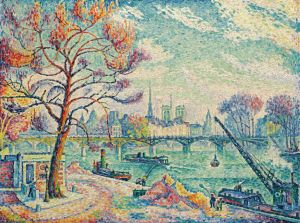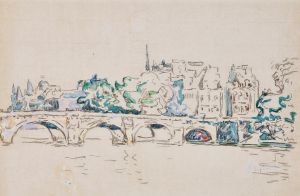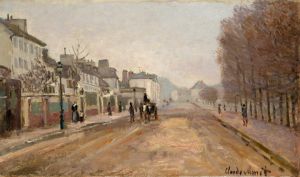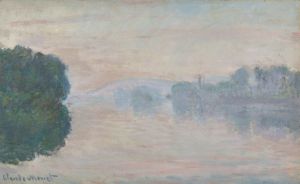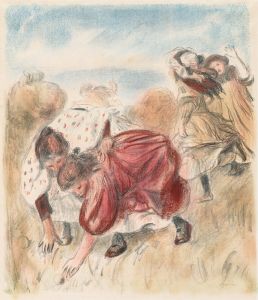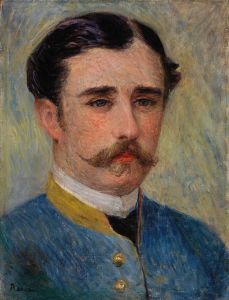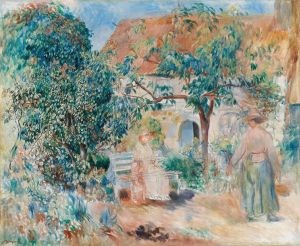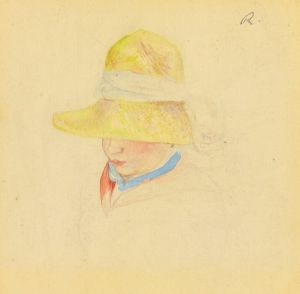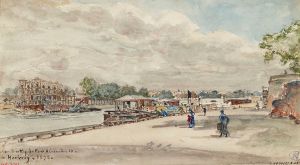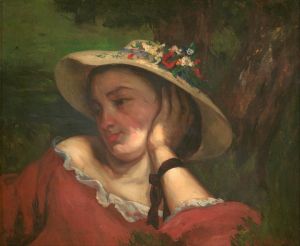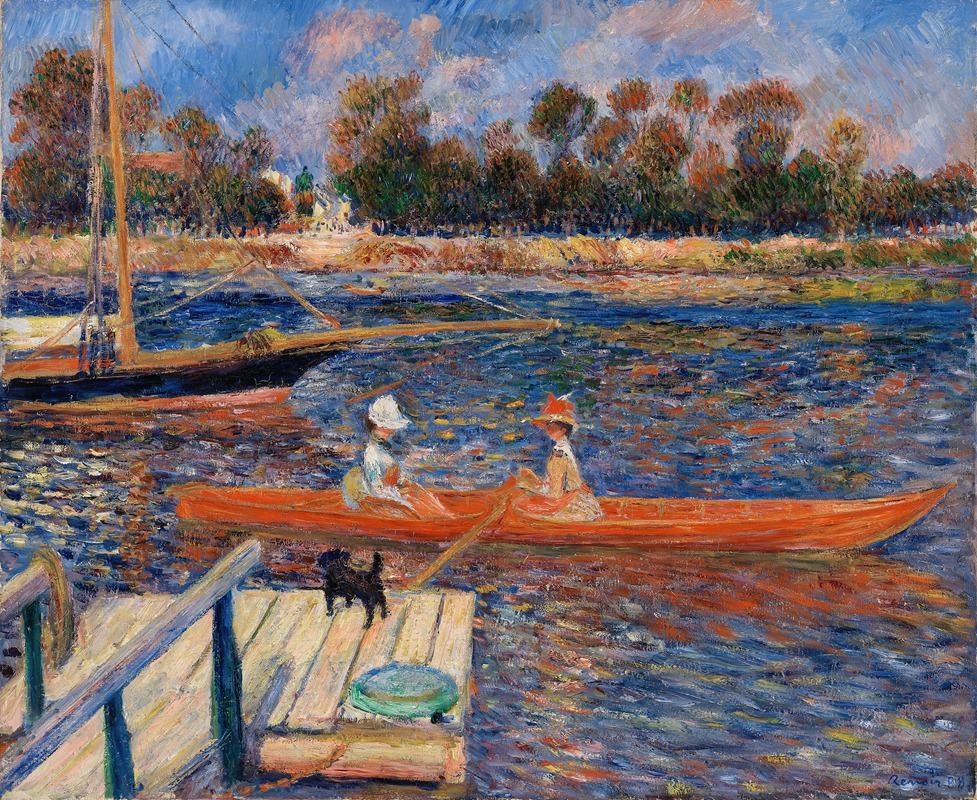
The Seine at Argenteuil
A hand-painted replica of Pierre-Auguste Renoir’s masterpiece The Seine at Argenteuil, meticulously crafted by professional artists to capture the true essence of the original. Each piece is created with museum-quality canvas and rare mineral pigments, carefully painted by experienced artists with delicate brushstrokes and rich, layered colors to perfectly recreate the texture of the original artwork. Unlike machine-printed reproductions, this hand-painted version brings the painting to life, infused with the artist’s emotions and skill in every stroke. Whether for personal collection or home decoration, it instantly elevates the artistic atmosphere of any space.
"The Seine at Argenteuil" is a painting by the renowned French artist Pierre-Auguste Renoir, created in 1873. Renoir was a leading figure in the Impressionist movement, which sought to capture the effects of light and atmosphere in their works, often painting en plein air, or outdoors, to achieve this. This particular painting is a testament to Renoir's skill in capturing the transient effects of light on water and the surrounding landscape.
The painting depicts a serene scene along the Seine River at Argenteuil, a small town located near Paris. During the late 19th century, Argenteuil was a popular destination for Parisians seeking leisure and recreation, and it became a favored spot for many Impressionist painters, including Claude Monet, who also painted several scenes of the area. The town's picturesque setting, with its river views and lush surroundings, provided ample inspiration for artists.
In "The Seine at Argenteuil," Renoir employs his characteristic loose brushwork and vibrant color palette to convey the shimmering reflections on the water and the dappled sunlight filtering through the trees. The composition is balanced, with the river occupying the foreground and middle ground, while the background features a glimpse of the town and its architecture. The painting captures a moment of tranquility, with boats gently floating on the river and figures leisurely enjoying the day.
Renoir's use of color in this painting is particularly noteworthy. He employs a range of blues and greens to depict the water and foliage, while touches of white and light hues suggest the play of sunlight on the river's surface. The sky is rendered in soft, pastel tones, contributing to the overall sense of calm and harmony in the scene. This approach to color and light is emblematic of the Impressionist style, which sought to evoke the sensory experience of a moment rather than a detailed, realistic depiction.
"The Seine at Argenteuil" reflects Renoir's interest in capturing the beauty of everyday life and the natural world. His ability to convey the atmosphere of a scene through color and brushwork is evident in this work, making it a fine example of his contribution to the Impressionist movement. The painting is also indicative of the broader cultural and artistic shifts occurring in France during this period, as artists moved away from traditional academic subjects and techniques in favor of exploring modern life and innovative approaches to painting.
Today, "The Seine at Argenteuil" is held in high regard as a significant work within Renoir's oeuvre and the Impressionist canon. It continues to be celebrated for its masterful depiction of light and color, as well as its ability to transport viewers to a peaceful moment along the Seine. The painting is housed in the National Gallery of Art in Washington, D.C., where it remains accessible to the public, allowing audiences to appreciate Renoir's artistic vision and the enduring appeal of Impressionism.





